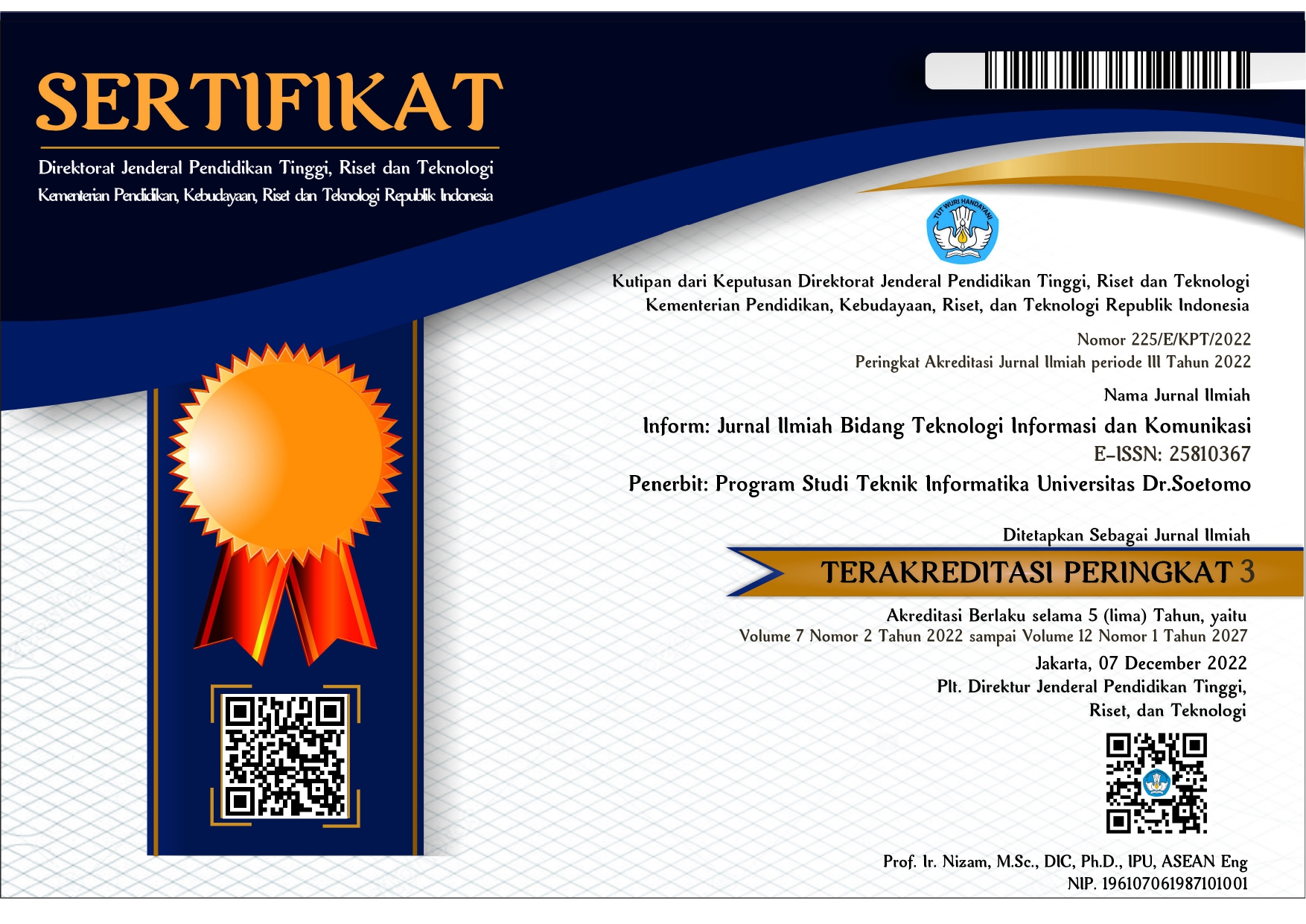Implementasi Kontrol PID Pada Mesin Penetas Telur Burung Murai
 Abstract views: 1634
,
Abstract views: 1634
,
 PDF downloads: 526
PDF downloads: 526
Abstract
The population number of rock trush according to Basuni et al explains that the rock trush population in nature become extinct because it has strong territorial and a lot of hunting due to its typical sound as a chirping bird. The efforts of conservation can be done through breeding activities. By this reason, it is important to do captive breeding and cultivation of rock trush. One of magpie’s cultivation is breeding the rock trush but there is a challenge in breeding when the hatching process. Not only the quality of good embryo, the success of hatching process is depend on ambient temperature. Temperature changes when the hatching process by its mother are influenced by weather during day and night or hot and rainy conditions.The fail of hatching process can make loss to the farmers because of ruck trush has an expensive cost. From these reasons, to increase the success rate of hatching eggs, stability of temperature is needed during the incubation process. In this study, egg incubator was made using HSM-20G sensor as a temperature and humidity sensor that placed in the center of the egg rack. Propotional-Integrative-Derivative (PID) control method is implemented in this system to keep temperature value of 37 C. The PID control is used to regulate the dim and bright light in the bulb when produce heat until the setting point reached. Because of the changing response speed in temperature is relatively slow, so trial and error parameters are made the constant values Kp = 2, Ki = 0.5 and Kd = 0.1, which produce the steady state of error not be more than 0.53% to the temperature set point. In this machine also used a fan to flatten the temperature and there is a hole for air circulation.
References
[2] Basuni S, Hernowo JB, Mulyono M. 2005. “Studi beberapa aspek ekologi burung murai batu di hutan wisata pananjung pangandaran”. Jurnal Media Konservasi. 2(10): 47-50.
[3] Jepson P, Ladle RJ. 2009. “Governing bird-keeping in Java and Bali: evidence from a household survey”. Journal of Flora & Fauna International. 43(3): 364-374.
[4] [IUCN] International Union for Conservation of Nature. 2013. “Daftar Populasi Satwa yang Termasuk kedalam Red List of IUCN”. http:www.iucnredlist.org. [diakses pada 25 April 2014].
[5] Palko, I V , Kalyakin, M V ,Thinh, N V. 2011. “Nesting of the White-Rumped Shama (Copsychus malabaricus) In southern Vietnam” Journal Bonner zoologische Monographien 2011 vol. 57:185-191.
[6] Suminarsih, E. 2006. “Memelihara, Melatih, dan Menangkar Burung Ocehan”. Penebar Swadaya. Jakarta.
[7] Hodgetts. 2000. “Incubation The Psichal Requiments”. Abor Acress service Bulletin No 15, August 1.
[8] Wulandari, A. 2002. “Pengaruh Indeks dan Bobot Telur Itik Tegal Terhadap Daya Tetas, Kematian Embrio dan Hasil Tetas”. Skripsi Fakultas Peternakan Universitas Jenderal Soedirman. Purwokerto.
[9] Humidity/Temperature Sensor Module HSM-20G, 2012, http://www.geeetech.com/wiki/index.php/Humidity_/Temperature_Sensor_Module_HSM-20G. diakses pada 11 maret 2017.
[10] Doren, V.V. 2009, “Sorting Out PID Controller Differences”, Control Engineering, 2, page 42-43.
[11] Setiawan, Iwan,. 2008, “Kontrol PID untuk Proses Industri”, Elex Media Komputindo, Jakarta.
[12] Braunl Thomas, 2006. “Embedded Robotics”. Springer, Perth Australia.
Copyright (c) 2019 Akhmad Fahruzi, Andy Suryowinoto

This work is licensed under a Creative Commons Attribution-ShareAlike 4.0 International License.
Authors who publish with Inform: Jurnal Ilmiah Bidang Teknologi Informasi dan Komunikasi agree to the following terms:
-
Authors retain copyright and grant the journal right of first publication with the work simultaneously licensed under a Creative Commons Attribution License (CC BY-SA 4.0) that allows others to share the work with an acknowledgment of the work's authorship and initial publication in this journal.
-
Authors are able to enter into separate, additional contractual arrangements for the non-exclusive distribution of the journal's published version of the work (e.g., post it to an institutional repository or publish it in a book), with an acknowledgment of its initial publication in this journal.
-
Authors are permitted and encouraged to post their work online (e.g., in institutional repositories or on their website) prior to and during the submission process, as it can lead to productive exchanges, as well as earlier and greater citation of published work.










